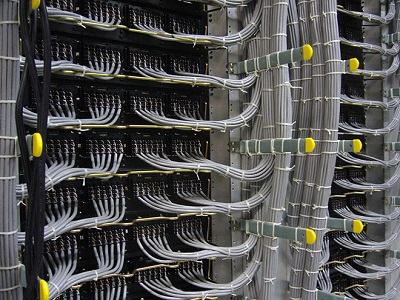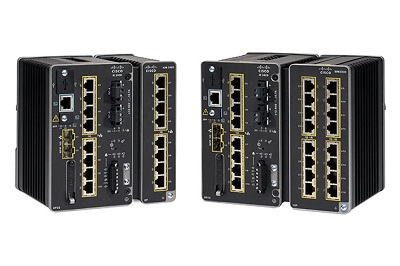The Black Ink Team's Guide To Industrial Ethernet Switches
by Black Ink Team
Factories can be harsh environments, but as far as technology goes they can also be highly sophisticated. In a smart factory dozens if not hundreds of sensors are constantly monitoring each assembly line – there are thermometers checking when a weld is complete, scales measuring when an order is full, cameras making sure objects are facing the right way, and more. For all these devices to connect to a central database and be able to talk to each other efficiently, however, you need a reliable network. WiFi can get the job of connecting together an ‘industrial Internet of things’ done, but for most factories it is not an ideal solution. When lots of sparks are flying and lots of machines are drawing power, it is hard for WiFi signals to be transmitted and picked up easily. For this reason, Ethernet is generally a better way to go.
Ethernet is a standardized form of data cable that is used for LAN (local area network) purposes. If you are viewing this webpage on a laptop or on a desktop computer, chances are it has an Ethernet port. It takes a huge length of Ethernet cable to connect each and every sensor in a smart factory; switches provide a way to reduce the amount of Ethernet cable that is required, and furthermore they can be used to build certain pieces of functionality into the network itself.

Ethernet cables
Similar to how plugging a power strip into a wall gives you a few extra outlets, when you hook an Ethernet switch into a router you end up with more Ethernet ports. You can see how this would help from a cable management point-of-view – instead of eight cameras needing eight different ports in your main router, for instance, you can plug them all into a switch and then plug that switch into your router, thus saving you seven ports.
There are two varieties of Ethernet switches: managed and unmanaged. When an Ethernet switch is managed, it means that a systems manager can set network traffic rules for all the devices plugged into it, usually on a port-by-port basis. In other words, they can use a software tool to stop the first port from uploading too much data, tell the second port to alert them when the device that is plugged into it stops uploading data, and etc. An unmanaged Ethernet switch does not offer this capability; it simply provides each port with the same upload/download rates.

Cisco IE3400 Ethernet switches
Another option when it comes to Ethernet switches is whether you want it to have PoE (Power over Ethernet). Power over Ethernet provides devices with both an Internet connection and power, which is perfect for when you have a large number of devices that need to be connected to a network and powered up. You would otherwise have to use twice the cables.
With a proper array of Ethernet switches, an industrial Internet of Things can be easily managed and monitored. The use of managed switches adds certain functionality to the network. When a batch of sensors needs to temporarily be given extra bandwidth, for example, it is a simple matter of telling the switch to raise its bitrate limits. By having switches close to where the sensors are located, you don’t need to run a cable all the way back to your central router; you can just plug one into a port on the switch. Finally, Ethernet switches with PoE can provide devices with power in addition to Internet.
Running an industrial Internet of Things with no switches would be like having a garage with only one toolbox. First off, the toolbox would have to be burdensomely big. Secondly, it would take a really long time to sort through the toolbox to find the individual tool you were looking for. It makes much more sense to separate different categories of tools – categorizing IIoT devices – into separate toolboxes – plugging them into separate switches.
